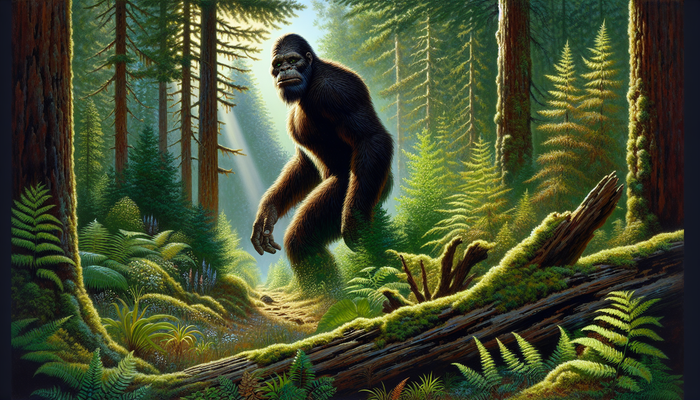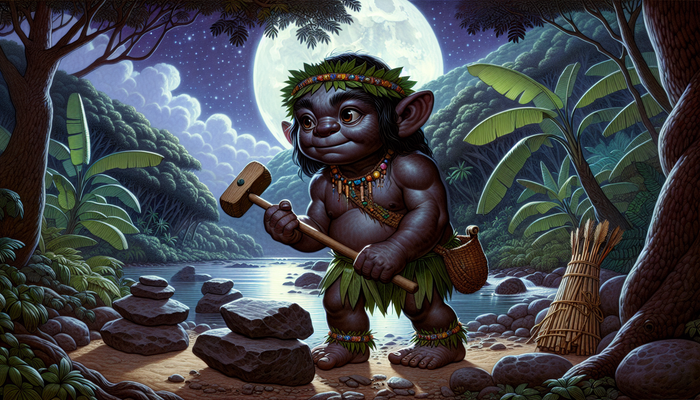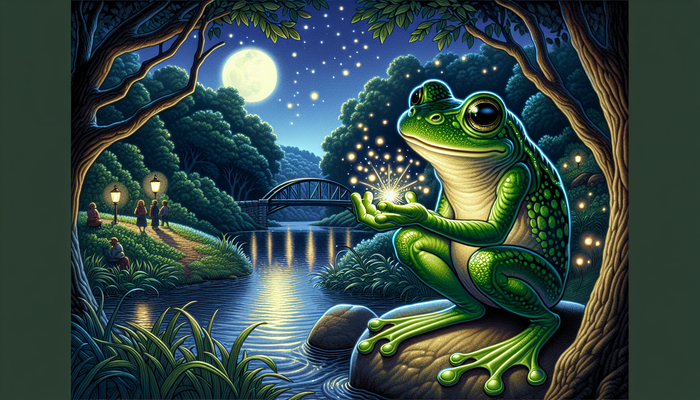Mississippi Mythical Creatures: From Piasa Bird to Pascagoula River Mermaids

By Dr. Elizabeth Harper, Cryptozoologist
In the heart of America's Deep South lies a land steeped in mystery and wonder, where the boundaries between myth and reality blur like the hazy edges of a dream. Mississippi, with its rich tapestry of history and culture, is a place where legendary creatures roam the landscape, their stories woven into the very fabric of the state's identity. As a biologist and cryptozoology researcher, I have long been fascinated by the enduring power of these mythical beings and the ways in which they reflect the hopes, fears, and imaginations of the people who have called this region home for generations.
From ancient Native American dragon paintings to haunted antebellum mansions, Mississippi's mythical creatures are as diverse as they are captivating. Each legend offers a glimpse into the complex web of beliefs, traditions, and historical events that have shaped this land and its people over the centuries. In this article, we will embark on a journey through the mists of time and legend, exploring the origins, stories, and significance of some of Mississippi's most famous mythical creatures. Along the way, we will discover how these fantastical beings have captured the imaginations of generations and continue to play a vital role in the state's cultural heritage.
So, dear reader, prepare to step into a world where the line between the natural and the supernatural is delightfully blurred, where river monsters lurk beneath the surface of the mighty Mississippi, where witches dance under the moonlight, and where the echoes of long-lost tribes still sing their haunting melodies. Together, we will unravel the mysteries of Mississippi's legendary creatures and gain a deeper appreciation for the power of myth and imagination in shaping our understanding of the world around us.
The Piasa Bird: Terror of the Mississippi Bluffs
High above the rolling waters of the Mississippi River, on a limestone bluff in present-day Alton, Illinois, a monstrous creature once loomed, its image etched into the rock face by the skilled hands of Native American artists. This was the Piasa Bird, a dragon-like beast that has captured the imaginations of people in the region for centuries.
The first recorded sighting of the Piasa Bird comes from the journal of French explorer Jacques Marquette, who, along with Louis Jolliet, embarked on a historic voyage down the Mississippi in 1673. As they navigated the river's twists and turns, Marquette noted in his diary a peculiar painting on the bluffs, describing it as a creature "as large as a calf with horns like a deer, red eyes, a beard like a tiger's, a face somewhat like a man's, a body covered with scales, and so long a tail that it winds all around the body, passing above the head and going back between the legs, ending in a fish's tail."
This fearsome depiction was no mere artistic fancy; it was a visual representation of a terrifying legend that had long haunted the Native American tribes of the region. According to the tale, the Piasa Bird was a monstrous, man-eating creature that would swoop down from its perch on the bluffs, snatching unsuspecting victims and carrying them back to its cave to be devoured. For years, the beast terrorized the local tribes, seemingly invincible and insatiable in its appetite for human flesh.
But every monster has its match, and for the Piasa Bird, that match came in the form of a brave chief named Ouatoga. The legend tells of how Ouatoga, determined to put an end to the creature's reign of terror, devised a plan to slay the beast. He offered himself as bait, standing alone on the bluffs as the Piasa Bird descended upon him. At the last moment, a group of Ouatoga's warriors, armed with poisoned arrows, emerged from their hiding places and unleashed a volley of deadly projectiles, piercing the creature's scaly hide and sending it tumbling to its doom.
The painting on the bluffs, then, was not merely a work of art, but a testament to the power of bravery, ingenuity, and the triumph of good over evil. For the Native Americans who created it, the Piasa Bird legend served as a reminder that even the most terrifying of obstacles could be overcome through courage, cunning, and cooperation.
Sadly, the original Piasa Bird painting did not survive the ravages of time and human activity. By the mid-19th century, the cliffs had been quarried for limestone, and the once-mighty creature's image was lost to history. However, the legend of the Piasa Bird endured, passed down through generations and kept alive in the hearts and minds of those who called the region home.
In the early 20th century, a group of local historians and artists, recognizing the significance of the Piasa Bird legend, set out to recreate the painting on a nearby bluff. Using descriptions from Marquette's journal and other historical accounts, they painstakingly crafted a new image of the creature, one that has since become an iconic symbol of the region's rich Native American heritage.
Today, visitors to Alton, Illinois, can still gaze upon the modern recreation of the Piasa Bird, its vibrant colors and fearsome visage a testament to the enduring power of myth and legend. As we stand in the shadow of this majestic creature, we are reminded of the countless generations who have looked upon it with awe, fear, and reverence, and of the timeless stories that continue to shape our understanding of the world around us.
River Monsters of the Mighty Mississippi
Beneath the murky depths of the mighty Mississippi River, a watery world of mystery and intrigue beckons, where tales of serpentine beasts and elusive river monsters have captivated the imaginations of those who live along its banks for generations. These legends, passed down through the ages, speak of creatures that defy explanation, their very existence blurring the line between the natural and the supernatural.
For centuries, Native American tribes have told stories of giant, snake-like creatures inhabiting the river's depths, their presence both feared and revered. These ancient tales, woven into the fabric of indigenous folklore, laid the foundation for a rich tradition of river monster sightings that would continue well into the modern era.
One of the most famous of these sightings occurred in the early 20th century, a time when the nation's fascination with the unexplained was at its peak. In 1937, a farmer named Bramlett Bateman, living near Newport, Arkansas, reported seeing a strange creature surface in the Mississippi River. According to Bateman's account, the beast was a staggering 30 feet long, with a serpentine body covered in gray scales and a set of fins protruding from its sides.
News of Bateman's sighting quickly spread, sparking a media frenzy as journalists from across the country descended upon the small Arkansas town, eager to catch a glimpse of the elusive "river monster." Speculation ran rampant as to the creature's true identity, with theories ranging from the plausible to the fantastical.
Some suggested that the beast might be a massive specimen of the alligator gar, a prehistoric fish species native to the Mississippi River basin. With their elongated, tooth-filled snouts and armor-like scales, alligator gars are indeed a sight to behold, and it's not difficult to imagine how a particularly large individual might be mistaken for something more monstrous.
Others proposed a more exotic explanation, positing that the creature could be an elephant seal that had somehow made its way up the river from the Gulf of Mexico. While it may seem far-fetched, elephant seals are known for their impressive size and their ability to navigate great distances, lending a modicum of plausibility to this theory.
Despite the best efforts of the assembled media and curious onlookers, no definitive proof of the "White River Monster," as the creature came to be known, was ever found. In the decades that followed, sporadic sightings continued to trickle in, each one adding to the growing legend of the river monsters that called the Mississippi home.
But what is it about these elusive creatures that so captivates our imaginations? Perhaps it is the very mystery that surrounds them, the tantalizing possibility that there are still wonders in this world that have yet to be fully explained. In a time when science has illuminated so much of the natural world, the idea that something as vast and ancient as the Mississippi River could still hold secrets is both thrilling and humbling.
Moreover, the legend of the river monsters taps into a deep-seated human fascination with the unknown and the untamed. The Mississippi, with its murky depths and hidden currents, represents a realm beyond our control, a place where the rules of the surface world do not necessarily apply. In this watery wilderness, anything seems possible, and the river monsters that dwell there become avatars of our own hopes, fears, and desires.
Whether the White River Monster and its kin are flesh-and-blood creatures or merely the products of overactive imaginations, one thing is certain: the legend of the Mississippi River monsters will continue to endure, a testament to the enduring power of mystery and the human spirit's unquenchable thirst for the extraordinary. As long as the mighty river flows, so too will the stories of the beasts that lurk beneath its surface, waiting to be discovered by those brave enough to seek them out.
The Singing River Mermaid of Pascagoula
Along the winding course of the Pascagoula River, a haunting melody echoes through the marshes and cypress groves, a ghostly reminder of a tragic tale that has become woven into the very fabric of Mississippi's coastal heritage. This is the legend of the Singing River Mermaid, a story of love, loss, and the enduring power of music to transcend the boundaries of life and death.
The tale begins with the Pascagoula tribe, a peaceful people who made their home along the banks of the river that now bears their name. According to legend, the Pascagoulas were a deeply spiritual people, attuned to the rhythms of the natural world and the mysteries that lay beyond the veil of mortal existence.
Central to their beliefs was a mermaid who dwelt in the river's depths, a beautiful and enigmatic creature whose enchanting songs would drift up from the water's surface, filling the air with an otherworldly melody. The Pascagoulas revered the mermaid as a divine being, a guardian of the river and a conduit between the realm of the living and the spirit world.
But the Pascagoulas' peaceful existence was not to last. One day, a rival tribe, the Biloxi, arrived on the banks of the river, intent on conquering the Pascagoulas and claiming their land as their own. Faced with the prospect of enslavement or slaughter, the Pascagoulas made a fateful decision.
Rather than submit to their enemies, the tribe chose to embrace the mermaid's song and walk into the river, singing the haunting melody as they disappeared beneath the waves. As the last of the Pascagoulas vanished into the depths, the mermaid's voice rose to a crescendo, a final, mournful tribute to the brave souls who had chosen to join her in her underwater realm for eternity.
From that day forward, the Pascagoula River became known as the Singing River, a name that has endured through the centuries as a testament to the tragic fate of the Pascagoula tribe and the enduring power of their story. Even now, those who live along the river's banks claim to hear the mermaid's song, a ghostly echo of the tribe's final moments and a reminder of the sacrifices they made in the face of overwhelming odds.
The legend of the Singing River Mermaid is more than just a tale of the supernatural; it is a poignant reflection of the very real struggles and triumphs of the Native American peoples who once called this land home. In a time when their way of life was under constant threat from outside forces, the Pascagoulas chose to embrace their spiritual beliefs and maintain their integrity, even in the face of certain death.
Their story, passed down through the generations, has become a symbol of resilience, courage, and the unbreakable bonds of community that have sustained the people of the Gulf Coast through countless trials and tribulations. It is a reminder that even in the darkest of times, there is hope to be found in the power of song, story, and the enduring strength of the human spirit.
Today, visitors to the Pascagoula River can still hear the mermaid's haunting melody, a ghostly hum that seems to emanate from the very waters themselves. Some say it is the wind whistling through the marsh grass, while others claim it is the sound of the river's current, forever echoing the final moments of the Pascagoula tribe.
But for those who know the legend of the Singing River Mermaid, there is no mistaking the true source of the eerie tune. It is the voice of a people who chose to embrace their destiny, to sing their way into the arms of eternity rather than succumb to the forces of oppression and despair. And as long as the river continues to flow, their song will never be forgotten, a timeless tribute to the power of myth, memory, and the unbreakable spirit of a people who refused to be silenced.
Bigfoot in the Bayou: The Honey Island Swamp Monster
Deep within the heart of Louisiana's Honey Island Swamp, a dense, primordial wilderness that straddles the border with Mississippi, a legend has taken root, whispered around campfires and passed down through generations of swamp dwellers. This is the tale of the Honey Island Swamp Monster, a creature that has captured the imaginations of cryptozoology enthusiasts and local residents alike, becoming a symbol of the untamed, mysterious nature of the bayou itself.
The origins of the Honey Island Swamp Monster legend can be traced back to 1963, when a man named Harlan Ford, a retired air traffic controller and avid outdoorsman, stumbled upon a series of strange, three-toed footprints in the soft mud of the swamp. Intrigued by his discovery, Ford made plaster casts of the prints, which measured over 12 inches in length and seemed to suggest a creature of considerable size and weight.
But it wasn't until 1974 that the legend of the Swamp Monster truly took hold, when Ford and his friend Billy Mills claimed to have encountered the beast itself while exploring the dense, moss-draped cypress groves of the Honey Island Swamp. According to their account, they spotted a large, bipedal creature wading through the murky waters, its body covered in dark, matted hair and its face obscured by the shadows of the overhanging trees.
Startled by the creature's sudden appearance, Ford and Mills managed to capture a few seconds of shaky, grainy footage on their 8mm camera before the beast disappeared back into the undergrowth. The film, though brief and of poor quality, seemed to show a large, humanoid figure moving through the swamp, its gait and posture unlike anything the men had ever seen before.
News of the sighting quickly spread, and soon the Honey Island Swamp Monster became a sensation, drawing cryptozoology enthusiasts, monster hunters, and curious onlookers from across the country to the remote Louisiana bayou. Theories about the creature's true identity abounded, with some suggesting that it could be a previously unknown species of primate, while others speculated that it might be a remnant population of Gigantopithecus, a massive, extinct ape that once roamed the forests of Asia.
As the legend grew, so too did the reports of sightings and encounters with the Swamp Monster. Locals claimed to have heard strange, bellowing cries echoing through the night, while hunters and fishermen spoke of finding inexplicable, three-toed footprints along the banks of the swamp's winding waterways.
Some even claimed to have had close encounters with the beast itself, describing it as a towering, ape-like creature with shaggy, dark hair, glowing red eyes, and an overpowering stench that seemed to permeate the air around it.
From Bigfoot to UFOs: Hangar 1 Publishing Has You Covered!
Explore Untold Stories: Venture into the world of UFOs, cryptids, Bigfoot, and beyond. Every story is a journey into the extraordinary.
Immersive Book Technology: Experience real videos, sights, and sounds within our books. Its not just reading; its an adventure.



























